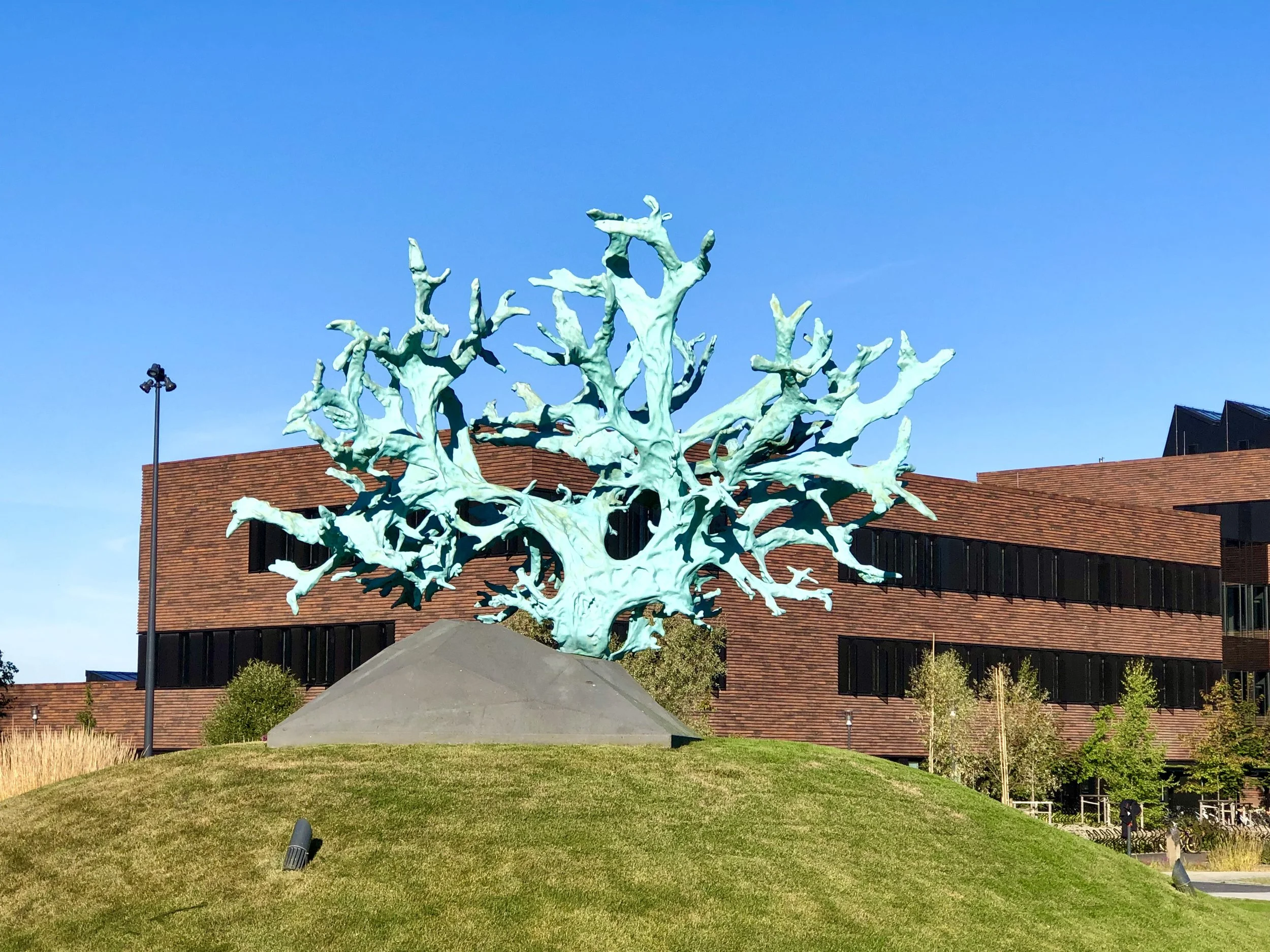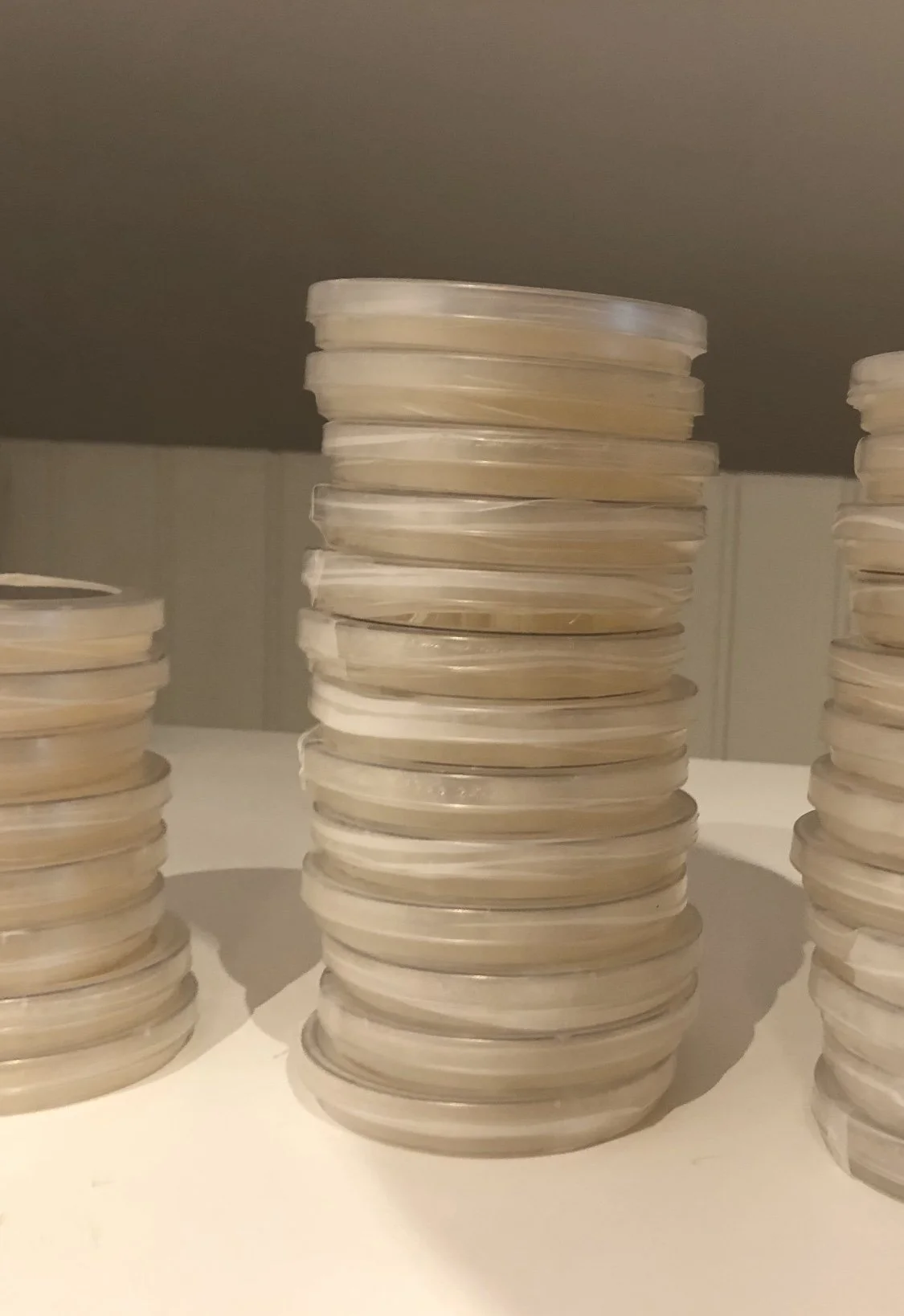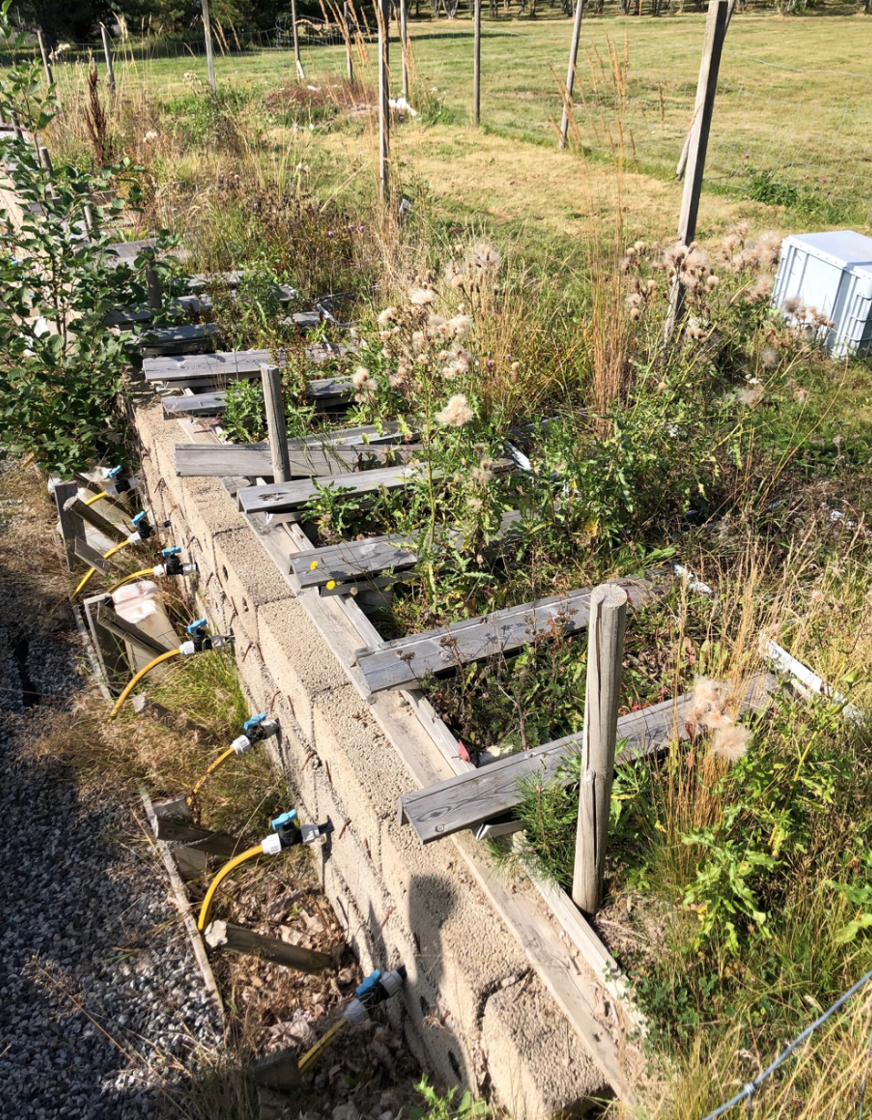With the help of invisible friends: MIGI in Norway
By Jake Robinson
For the past week, I’ve taught microbial ecology at the Norwegian University of Life Sciences (NMBU) near Oslo. When I first walked to the lecture room to talk about the mystical world of microbes and cryptogams (lichens, mosses, algae, fungi), a giant lichen monument stopped me in my tracks. A serendipitous encounter; clearly, it was meant to be!
Lichens are a form of nested symbiosis. Indeed, they’re a fascinating conglomerate of fungi (mycobiont) and algae and/or cyanobacteria (photobiont) partners working together with a core, symbiotic microbiome. I hoped my visit would also be a form of nested symbiosis. I exchanged research, cultural and pedagogical insights with students and lecturers, and I hoped the students would nurture, diversify and impart any knowledge that set seed. This reminds me of the “ecology of mind” concept. After all, ideas and knowledge are subject to evolution and flourishing, just like the microbes, plants and animals in a tangible ecosystem. Nonetheless, much of my ecological knowledge is gleaned by directly observing nature; it’s gifted by other organisms, some large (e.g., trees) and some invisible (e.g., bacteria and fungi), but all are equally potent educators. Therefore, in addition to talking, we got our hands dirty and observed those ‘other-than-human’ teachers!
The giant lichen monument on campus
Prof. Jorg Sieweke invited me to help strengthen the fragile connections between microbial ecology and landscape architecture — the interdisciplinary field dealing with the planning, design, management, and nurturing of the built and natural environments. Whilst a few people in the field work on microbe-related projects, there are no unified or extensive considerations for microbes in landscape architecture. This may be surprising given that microbes are fundamental to the functioning and resilience of ecosystems.
After a morning of lectures and indoor activities, we headed out to the rain gardens (landscaped features designed to collect stormwater), bioswales (vegetated channels intended to capture runoff) and ponds on the campus to collect samples and culture microbes! We took swab samples from the rhizosphere (the narrow region of soil that is directly influenced by root secretions and associated soil microbes) and phyllosphere (the aerial region of the plant colonised by microbes), along with entirely different samples for comparison. For instance, some people swabbed their skin or placed their hands in the Petri dishes. The dishes were then incubated, and microbes were left to grow across the culture medium. The objective was to gain awareness of the ubiquitous nature of microbes and how different niches support different communities, just like in the macro world. We would then discuss the functional roles of the microbes we discovered!
Petri dishes before they were incubated.
We also built a range of Winogradsky Columns using rain garden mud and other ingredients. These columns illustrate how different microbes perform interdependent roles: the activities of one microbial group enable another to grow, and vice-versa. The columns are self-contained recycling systems driven by energy from sunlight. After a few weeks, niche stratification occurs, and beautiful coloured bands appear, particularly in exemplary specimens. The augmented pigments of the dominant microbes produce the colours in the layers. For instance, purple bands come from the carotenoid pigments of purple sulphur and non-sulphur bacteria. And the green-blue bands often come from the chlorophyll-containing cyanobacteria, which photosynthesise, much like plants! The columns are polarised by oxygenated conditions at the top (selecting for aerobic bacteria) and deoxygenated conditions at the bottom (selecting for anaerobic bacteria). The columns can also simulate pollution bioremediation. You simply add different compounds and wait to observe the microbial response over the following weeks and months.
Baseline photos of the students’ Winogradsky columns
This was the pedagogical side of things. I was also employed to co-develop a research agenda. We have a suite of abandoned experimental plots to tinker with (see picture below). The idea is to run a series of mesocosm experiments to simulate rain gardens and green roofs on a smaller scale. We will likely apply various treatments, including microbial inoculants (such as plant growth-promoting bacteria and fungi), holistic microbe-promoting practices, and native mushroom spawn to test their effects on the green-blue infrastructure performance. The students will be fully involved in this project and are encouraged to develop their own research agendas and germinate those seeds of knowledge.
Abandoned experimental plots!
When it comes to urban nature, there is a need to nurture long-term thinking. It’s vital to view green-blue infrastructure features as complex ecosystems (see Microbiome-Inspired Green Infrastructure; MIGI) and not as ornaments that can be easily replaced. The landscape architecture discipline can help foster this holistic way of thinking. Let’s observe and work with the ‘other-than-human’ educators – the large and the invisible.
Find out more about the secret life of these microbial teachers in my forthcoming book Invisible Friends—soon to be published by Pelagic Publishing.




